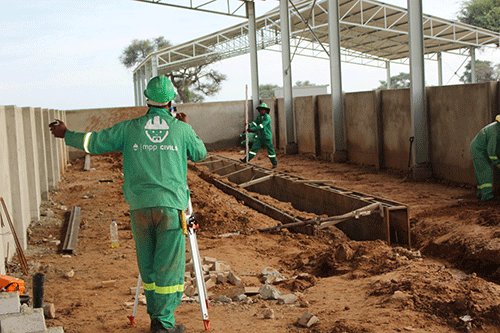The City of Windhoek (CoW) approved about 41% less building plans in December 2022 at 121 plans approved, compared to 204 in November 2022. But this was 15% more than the 105 approved in December 2021. Approved plans in December 2022 had a total value of N$49.2 million, compared to N$134.9 million in November 2022. These include 83 plans for new residential additions, 24 for new residential properties, 11 for walls, and three for new commercial buildings.
According to Simonis Storm (SS), building completions remained somewhat flat during the second half of 2022. During December 2022, 81 building completions took place, compared to 89 completions in the prior month, and 67 in December 2021. The completed projects had a total value of N$39.6 million, compared to N$52.7 million for projects completed in November 2022, and included 69 residential properties, 10 residential additions and two walls.
Meanwhile, on a month-on-month basis, the Swakopmund Municipality approved 11% more building plans at 70 during December 2022, compared to 63 in the prior month, and 27% more than the 96 approved in December 2021. Approved plans for Swakopmund have a total value of N$53.8 million, compared to N$77.6 million in November 2022, with 62 plans for new residential properties, four plans for industrial buildings, two plans for residential additions, and one plan each for institutions and commercial buildings.
“Building completions marginally rose to 47 in December 2022 from 46 in November 2022, with a total value of N$17.9 million. Completions were focused in the residential segment of the market, with 27 completions being recorded for new residential properties, 11 for residential additions, seven for industrial buildings, and one each for new flats and commercial buildings,” reads an SS report.
Moreover, they noted that pipeline building activity remains focused on residential properties. “More specifically, building plan approval rates are much higher for residential additions than new residential properties. These types of projects are typically on a smaller scale, and would not yield sufficient profits for large-scale construction companies. Hence, either profit margins must be sacrificed to pursue these smaller projects, or alternative business operations have to be adopted. From our conversations with certain local companies, it seems a combination of these are currently being considered,” SS stated.
The local stock brokerage further pointed out that the domestic construction sector recorded its fifth consecutive quarterly decline in the third quarter of 2022, contracting by 10% year-on-year.
SS thus forecast that growth in this sector is likely to remain weak until government’s green hydrogen project commences in the south, until municipalities are able to increase supply of serviced land, and until a point is reached where public finances improve and allow fiscal space for government to restart certain construction projects.
“Local construction companies had to diversify business activities, as pipeline work remains subdued. Profits have also been under pressure as smaller scale projects take precedence in the absence of large-scale projects. In addition, competition remains fierce, where local construction companies compete against foreign companies more intensely in public tenders. This has led small and medium-sized enterprises (SMEs) in the construction sector to close down altogether,” SS stated.
The stock brokerage also cautioned of a bleak outlook for the construction sector if government does not respond to private sector requests for a regulatory body in the construction sector. “Lastly, higher interest rates and a double digit increase in building material prices are expected to delay the commencement of the construction of buildings for which plans are currently being approved,” the SS report added.


